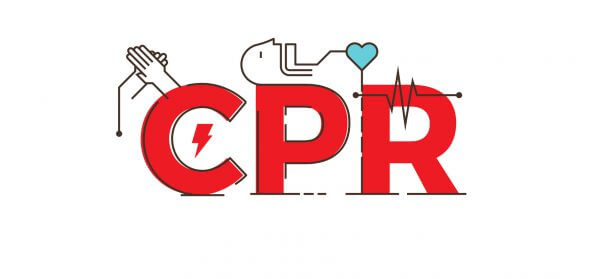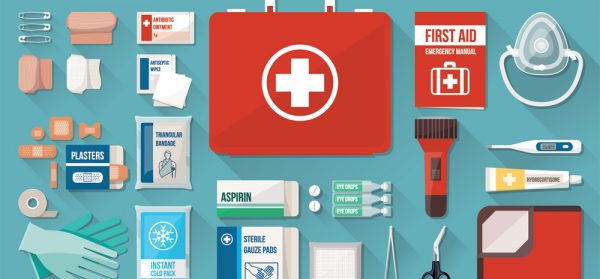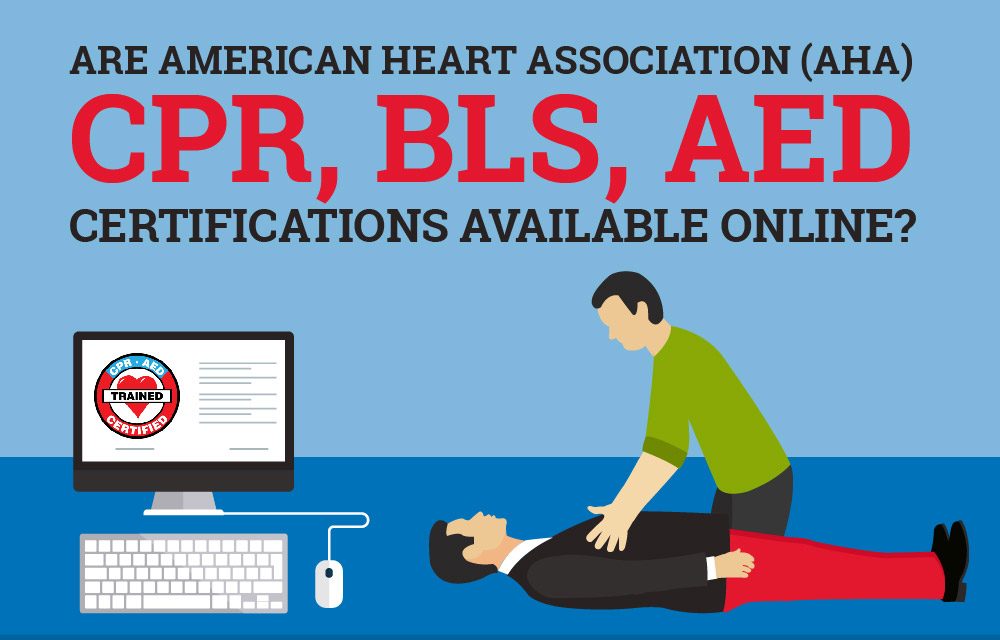
CPRNM® is a comprehensive directory designed to connect individuals and employers with top-tier training
providers including the AHA®, Red Cross®, and other training providers.*
You’ve been standing in line for the hottest new ride at your local amusement park on the hottest day of the year. Looking around, your fellow queue-mates have a miserable, sweaty air about them, but no one is going to miss their chance to ride this new ride. All of a sudden, the man standing next to you turns deathly pale, clutches his chest, and falls to the concrete. He’s having a heart attack… Do you know what to do?
You watch enough TV, so you know you should feel his neck for a pulse. He’s not breathing and you can’t find a pulse. This man needs CPR. You call for help, but no one can hear you over the screams of the roller coaster riders. The seconds tick by, but no one comes to the rescue. His wife is crying hysterically; she doesn’t know CPR, either. The man is pronounced dead on arrival.
This story could have had a different ending. If someone, or, even better, multiple people, in the crowd had known CPR, the man might have been kept alive until emergency crews arrived and rushed the man to the hospital.
Cardiac arrests are all too common
Unfortunately, this situation is all too common. Heart disease is on the rise in this country, with those at greatest risk among the aging Baby Boomer generation. Roughly 300,000 cardiac arrests occur each year in the United States¹. Studies of these cardiac arrests have shown that the sooner chest compressions are started after the heart stops, the better the long-term prognosis¹.
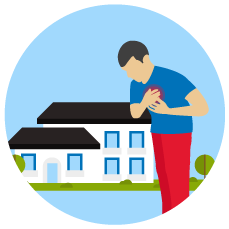
Over 300,000
cardiac arrests occur at home

Only 32% of cardiac
victims receive bystander CPR
The over 300,000 victims suffering from cardiac arrest annually occur outside hospitals. Only 32% receive CPR from a bystander. These victims could be your family, friends, children or neighbor. Providing this life saving intervention can double or even triple a victim’s chance of survival when given in the first few minutes of cardiac arrest (AHA, 2014).
A Different Ending
You’re standing in line for a roller coaster on the hottest day of the year. The man next to you collapses to the ground and lays lifeless. You immediately feel his neck for a pulse—there isn’t one. This man needs CPR as soon as possible, and you just finished your online CPR certification. “Call 911 and get an AED!” you say loudly and clearly, making eye contact with a passing amusement park employee. She sprints away.
You place your stacked palms on the end of the man’s sternum. “One and two and three and four…” You begin compressions, knowing you must compress the man’s chest by at least two inches in order to be effective. This is more difficult than you anticipated, but your adrenaline is pumping as hard as you.
“…and twenty-nine and thirty.” You stop chest compressions, pinch the man’s nose and tilt his head back so it looks like he’s sniffing a rose, cover his mouth with yours, and blow into his mouth. His chest rises, so you know you delivered a successful rescue breath. After one more rescue breath, you resume chest compressions.
“I have the AED,” the park employee gasps, “and EMS are on their way!” You administer your second set of rescue breaths and apply the AED patches to the man’s chest. It’s critical you restart chest compressions immediately, so you talk the park employee through the process. You know from your class that once you turn an AED on, it will prompt you on what to do. The park employee’s badge says her name is Kate. “Ok, Kate, plug the AED patches into the machine and turn it on.” She turns the switch and the AED’s robotic voice instructs you to halt compressions so it can get a heart rhythm. “Preparing to shock. Stand clear,” you hear. You scoot back and a shock is delivered.
He doesn’t move, so you start compressions once more. After your two rescue breaths, the AED instructs you to halt compressions in order to evaluate his heart rhythm. “Preparing to shock. Stand clear.” Another shock is delivered. The man coughs and begins to breathe, “Oh man, what happened to me?” The crowd cheers and pats you on the back. You saved his life! “You collapsed at the amusement park and didn’t have a pulse. I performed CPR and the AED shocked you twice to fix your heart rhythm. An ambulance is on the way to take you to the hospital.” His wife hugs you, tears streaming down her face. “You saved him. Thank you. You saved him!”
Interview with the American Heart Association
https://soundcloud.com/itruckmedia/american-heart-association-int
https://soundcloud.com/itruckmedia/american-heart-association-int
AHA CPR, BLS, and AED Certifications are Available Online.
I know what you’re going to say. You’re busy with work or school or family. There’s no way you can get a babysitter to watch your kids while you sit through a four-hour class. Fortunately, that’s no longer necessary. You can earn your American Heart Association (AHA) CPR, BLS, and AED certifications online! Can you really afford to NOT be CPR-certified?
You can earn your CPR, BLS, and AED certifications online for a nominal fee. Learn how to respond in an emergency, take the certification test, and print a temporary wallet card immediately. A permanent card will be sent to you, generally within a week. It’s important to note that these courses are American Heart Association (AHA)-compliant. However, if your employer requires CPR/BLS for Healthcare Providers, you will have to complete the demonstration portion of the certification in front of a BLS instructor. Spend a few dollars and a few hours. Learn CPR. You never know when you may need it. You just might save a life.
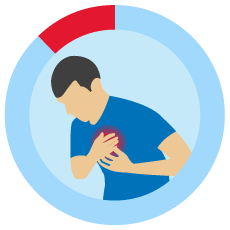
88% of cardiac
emergencies occur at home

68% of cardiac arrest
victims receive no help at home
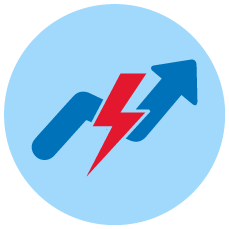
Administering CPR quickly
will increase survival rate
Remember that 32% of people who receive CPR earlier? The other 68% did not receive the help they needed. Eighty-eight percent of these emergencies happen at home (AHA, 2014). Investing in your family’s health is as easy as taking an online CPR, BLS or AED course. Sign up today.
Reference: Bon, C. A. (2017, Feb 6). Cardiopulmonary Resuscitation (CPR). Retrieved from:
http://emedicine.medscape.com/article/1344081-overview
American Heart Association (2014). CPR Facts and Stats. Retrieved from:
http://cpr.heart.org/AHAECC/CPRAndECC/AboutCPRFirstAid/CPRFactsAndStats/UCM_475748_CPR-Facts-and-Stats.jsp
Meta: Looking for American Heart Association, CPR, BLS and AED courses online? Find and complete with ease including a scenario and stats.
 July 26, 2017
July 26, 2017 
